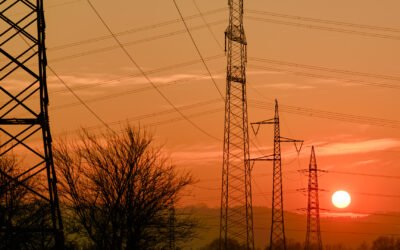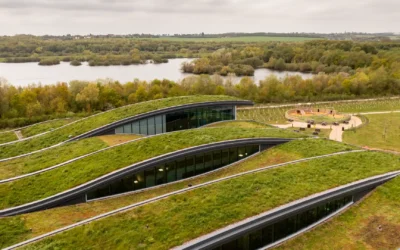- The Russia-Ukraine war has served as a wake-up call for the EU member states to decrease their dependence on Russian energy supplies.
- Due to the expanding integration of renewable sources within the energy generation mix, the European FACTS Market is experiencing a notable upswing.
- Establishing semiconductor facilities and revising policies to ensure power quality will further facilitate the expansion of FACTS technology in the region.
The Russian invasion of Ukraine was a wake-up call for the European Union (EU), highlighting the harsh reality of its dependence on Russian energy supplies, specifically natural gas and oil. Russia has been the EU’s major supplier of fossil fuels, with the transport sector heavily relying on oil and the power sector relying on gas. In the aftermath of the conflict, Russia ceased gas supplies to four countries and imposed self-sanctions and limitations on other member states.
The REPowerEU strategy was introduced to gradually reduce Europe’s reliance on fossil fuels sourced from Russia. This comprehensive strategy entails diversifying gas suppliers, accelerating the integration of renewable energy sources, and promoting the electrification of heating systems. The overarching objective is to achieve a substantial two-thirds reduction in the utilization of Russian gas supplies. Additionally, the EU’s Renewable Energy Directive establishes guidelines and regulations to ensure the EU’s attainment of its 2030 target of 32% renewable energy utilization. In addition to the mentioned program, “Fit for 55” is an initiative focusing on the EU’s objective of achieving a minimum 55% reduction in net greenhouse gas emissions by 2030.
Due to the expanding integration of renewable sources within the energy generation mix, the European FACTS Market is experiencing a notable upswing.
FACTS Facilitating Renewable Energy Grid Integration
The graph below showcases the projection of renewable energy sources (solar and wind) in the EU, demonstrating a rapid growth of renewables injection in the past few years.

Figure 1: Solar and Wind Energy Generation Capacity Increase in European Union Member States in Recent Years.
Source: PTR Inc.
This growth has prompted the EU’s grid operators to address challenges arising from the intermittent and variable nature of renewable energy sources to ensure a reliable and stable power supply. To mitigate this challenge and minimize the risk of blackouts in the region, the deployment and use of Flexible AC Transmission System (FACTS) devices becomes imperative. These devices enhance controllability and power transfer capability, providing the necessary support to maintain a resilient and efficient electrical grid.
Current Landscape of FACTS Devices in the European Union
The demand for FACTS is growing and is expected to grow in the EU over the coming years. This section discusses the key industry players of FACTS in the EU, the preference of STATCOM over SVC in recent years, and increasing competition with the entrance of new Chinese and Korean players in the EU FACTS market.
Frontrunners and followers
The adoption of FACTS devices in the EU’s electrical grid is rapidly progressing. Germany leads in deploying FACTS devices, with Sweden, Italy, and Spain following suit. There were almost no FACTS devices in the German grid a few years back, but with the rising grid stability issues, German transmission system operators (TSOs) have started massive deployment of FACTS. Italy has also commissioned a couple of utility-scale static synchronous compensators (STATCOMs) to support the inter and intra-country interconnections. In addition to the STATCOMs, Italy has shown a strong commitment towards deploying synchronous condensers as the Terna, the Italian TSO, has identified several points where inertia will be needed in the future. In Sweden, Svenska Kraftnät deployed STATCOM to keep the network stable as the closure of the nuclear power plant in Ringhals exposed the grid to voltage stability issues. Spanish TSO Red Eléctrica de España (REE) has plans to add dynamic reactive power capabilities in the network through multiple STATCOM devices. However, the TSO has only been able to install one device so far, with a few more in the pipeline.

Figure 2: Ranking of EU Member States based on FACTS Deployment.
Source: PTR Inc.
The renewable energy targets set by other EU member states demonstrate significant potential for the future growth of the FACTS market in the region. Slovenia, for instance, aims to install a solar generation capacity of 800 MW by 2030. To mitigate grid congestion and ensure a reliable power supply, Slovenia successfully implemented its first STATCOM project in 2022. Similarly, Finland is making strides towards contributing to the EU’s renewable energy target by aiming for a 50% share of renewable energy in its gross final energy consumption by 2030, positioning itself as a frontrunner in renewable energy among EU member states. Consequently, Finland has several planned projects in the coming years that will drive the deployment of FACTS devices within its utility grid.
STATCOM vs SVC
The deployment of static var compensators (SVCs) was prevalent in the region in the past, but a significant shift towards STATCOMs has been observed. The pie charts below illustrate this transition from SVCs to STATCOMs from 2018 to 2022. SVCs accounted for approximately 17% of the projects, while STATCOMs represented the majority with 83% of the projects.

Figure 3: Use of STATCOM vs SVC in the new Projects During 2018-2022.
In addition to SVCs and STATCOMs, deploying synchronous condensers is becoming increasingly common. This is driven by gas and steam power plants, which house large generators that can be repurposed and converted into synchronous condensers near the end of their operational life.
Competitive Landscape
The EU is home to the FACTS industry’s leading original equipment manufacturers (OEMs). These prominent players, including Siemens Energy in Germany, General Electric in France, and Hitachi Energy in Sweden, have established converter facilities strategically located within the region. This advantageous positioning enhances and contributes to a streamlined supply chain landscape, enabling the adoption of FACTS devices throughout the EU.

Figure 4: Key FACTS OEMs and their Locations.
Source: PTR Inc.
The presence of Chinese and Korean players in the EU FACTS market has significantly expanded the supply, increasing competition. This market dynamic benefits utilities and FACTS customers by providing them with a broader range of suppliers. The increased competition also facilitates the negotiation of more competitive pricing for FACTS equipment, ultimately benefiting the end users.
The top FACTS supplier is Siemens Energy, followed by Hitachi Energy, RXPE, and GE. Historically, GE has held the rank among the top three, but recently, with the entrance of Chinese players, the GE market has been impacted slightly.

Figure 5: Top FACTS Suppliers in EU.
Source: PTR Inc.
Recognizing the importance of reducing reliance on Chinese or Japanese manufacturers and expanding semiconductor manufacturing within the EU, the European semiconductor industry is projected to experience substantial growth in the coming decade. This growth is expected to be centered around countries such as Spain, Germany, France, and Italy. The expansion of the European semiconductor industry strengthens the supply chain landscape for FACTS devices in the region, reducing dependence on foreign manufacturers and limiting the presence of Chinese players in the market in the future.
Application Landscape of FACTS Devices in the EU
The chart below illustrates the distribution of FACTS technology applications in the EU between 2018 and 2022. The utility sector represents the largest portion, accounting for 74% of the applications, while the industry sector comprises only 26%.

Figure 6: FACTS Application Split in EU.
Source: PTR Inc.
Historically, in the EU, FACTS technologies found their main applications in industries, railways, and renewables. A significant number of FACTS devices were deployed in the EU industries due to stringent grid codes and power quality requirements, particularly in steel production, with SVCs being the prominent technology of choice.
However, in the recent past, deploying FACTS devices within the existing EU AC grids has become crucial to ensure grid stability and reliability. The integration of renewable energy sources has further driven the need for FACTS devices in the transmission network of utilities.
Looking Ahead
EU member states must take up bold initiatives to achieve a carbon-free future, adapting to the increasing demand for renewables and electrification in the energy system. By the end of the decade, the power sector will witness a significant ramp-up in solar and wind farm installations, leading to an increased demand for FACTS devices. The EU’s emphasis on cross-border interconnections and long-distance electricity transmission drives the adoption of high-voltage DC (HVDC) transmission, which may impact the deployment of FACTS devices in AC systems.
However, considering the current market conditions, FACTS still holds substantial growth potential in the EU. Furthermore, establishing semiconductor facilities to reduce reliance on Chinese semiconductor manufacturers and revising policies to ensure power quality will further facilitate the expansion of FACTS technology in the region.
Flexible AC Transmission Service Overview
The research presented in this article is from PTR's Flexible AC Transmission service. For information about this service please submit a request shown below.
Contact Sales:
Europe
+49-89-12250950
Americas
+1 408-604-0522
Japan
+81-80-7808-1378
GCC/Rest of APAC
+971-58-1602441
More about our:
Flexible AC Transmission Systems Market Research
Recent Insights
US Elections: Consequences of a Second Trump Presidency for Energy Sector
The US is making strides to move away from fossil fuels and eventually decarbonize the energy sector. The White House aims to achieve 80% renewable...
Sustainability Across Sectors: Highlights from GreenTech Festival 2024
Recently, I had the privilege to attend and present at the Greentech Festival, an excellent event in the realm of sustainability. This influential...
US and EU Strategies in Smart Buildings
Download Service Overview The EU and USA aim to decarbonize their building sectors to meet emission reduction targets. Initiatives like the Home...


